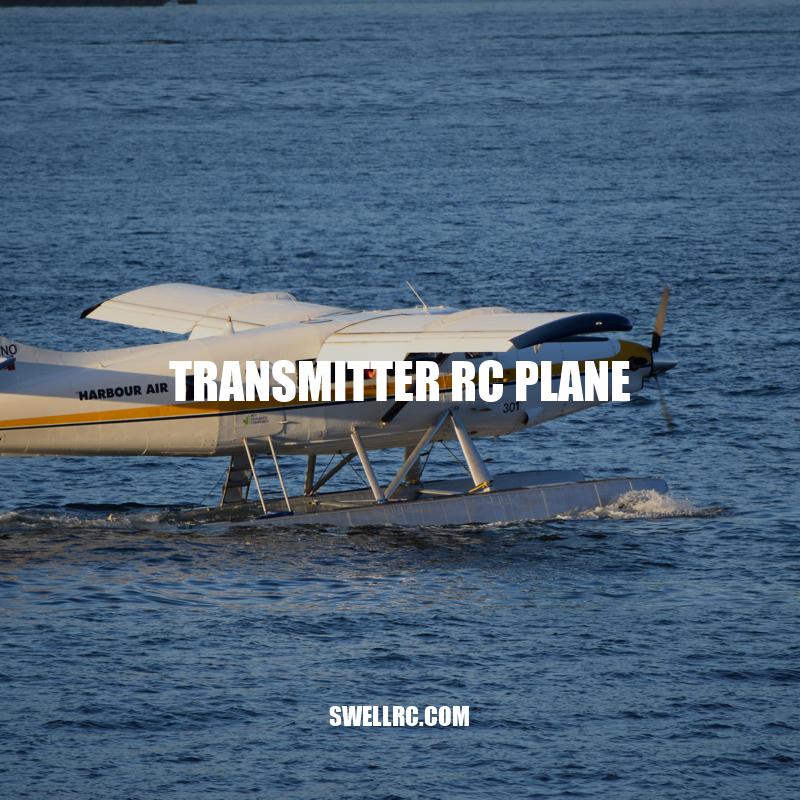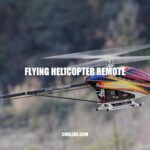Transmitter RC planes: A beginner’s guide
If you’re an enthusiast of remote-controlled planes, a transmitter RC plane is an advanced option that you need to explore. These aircraft are operated by a transmitter, which sends signals to the receiver on the plane for control. They come in diverse sizes, ranging from small indoor models to larger outdoor planes. In this article, we’ll provide a comprehensive guide on transmitter RC planes, covering everything you need to know before getting started. We will highlight the basics of operating these planes, factors to consider when selecting them, and the benefits of having them as a hobby. Whether you’re a beginner or an experienced pilot, this guide will help you gain more insight into transmitter RC planes. So, let’s get started and look at what you need to know about these fantastic flying machines.
Factors to Consider When Buying a Transmitter RC Plane
Before buying a transmitter RC plane, there are factors you need to consider to make the most out of your investment. Here are some key factors to consider:
- Experience level: Choose a model that suits your skill level, whether you’re a beginner or experienced pilot.
- Size: Consider where you will fly the plane, whether it will be indoors or outdoors, and choose a size that will meet your needs.
- Modes: Some transmitter RC planes come in different modes, such as manual or automatic, so choose the one that suits your preferences.
- Range: Consider the range of the transmitter that comes with the plane and ensure that it meets your needs.
- Battery life: Check the battery life of the plane and the transmitter to ensure that you can fly for the desired amount of time.
- Build quality: Choose a model that is made of durable materials and is well-built to withstand crashes or damage.
- Price: Consider your budget and choose a model that offers the features you need at a price you can afford.
Researching online or consulting with experts in hobby shops can help provide you with more information before buying a transmitter RC plane. Some popular sites to purchase transmitter RC planes include Amazon, Horizon Hobby, and Tower Hobbies. These sites offer a vast selection of models, including the E-flite Apprentice, the Blade 230 S V2, and the HobbyZone.
How do you connect a transmitter to an RC plane?
Connecting a transmitter to an RC plane involves binding the receiver to the transmitter and then setting up the control surfaces. The specific steps vary depending on the type of transmitter and receiver being used, but generally involve powering both devices on, putting the receiver into bind mode, and then holding down a button or switch on the transmitter while in range of the receiver. For more detailed instructions, the YouTube video tutorial ‘How To Bind Your RC Receiver And Transmitter’ by Flite Test provides a helpful visual guide.
Flying a transmitter RC plane requires a little bit of practice and patience, but once you get the hang of it, you’ll have a blast. Here are some tips to keep in mind when flying your plane:
- Check the weather: Avoid flying on windy or rainy days, since these conditions can cause your plane to crash.
- Find a suitable location: Look for an open space with no obstructions and minimal people around. Parks, fields, and beaches are good options.
- Perform a pre-flight check: Check the battery level, make sure the receiver and transmitter are paired, and ensure the control surfaces are working correctly.
- Takeoff: Apply throttle slowly and smoothly to take off, and use the elevator and rudder controls to steer the plane.
- Control the plane: Fly the plane with small, smooth movements of the sticks and avoid sudden or jerky movements. Check your altitude and speed regularly.
- Landing: Reduce the throttle gradually and gently steer the plane towards the ground. Use the elevator to decrease speed and ensure a smooth landing.
Did you know that the first radio-controlled airplane was developed in 1937 by a model airplane enthusiast named Reginald Denny? Today, transmitter RC planes have come a long way and offer an exciting hobby for people of all ages.
Here is a comparison table of some popular transmitter RC planes that can guide you in your buying decision:
| Model | Price | Size | Range | Battery Life |
|---|---|---|---|---|
| Dynam RC Airplane Super Cub | $199.00 | Small | 500m | 10 minutes |
| HobbyZone Sport Cub S RC Airplane | $149.99 | Small | 200m | 15 minutes |
| E-flite Apprentice STS RC Airplane | $299.99 | Medium | 1000m | 20 minutes |
If you’re looking for more information on transmitter RC planes, the RC Groups forum is a great place to connect with fellow hobbyists and ask for advice. Other online resources for tips and tutorials include Flite Test and RC Geeks.
How do you hold a RC plane transmitter?
To hold a RC plane transmitter, use a normal grip, keeping your fingers on the joysticks and your thumbs on the back of the transmitter. Some transmitters may have a strap to put around your neck or attach to your waist to hold them securely. It is important to find a comfortable way of holding the transmitter that works for you, as you will be using it for extended periods of time. Different transmitters may have slight variations in ergonomics, so it is worth trying out a few to see which one you prefer. For more information on RC planes and transmitters, you can check out websites like RC Groups or Horizon Hobby.
Caring for Your Transmitter RC Plane
Taking care of your transmitter RC plane is crucial for its longevity and performance. Here are some tips to ensure your plane stays in top condition:
- Store your plane properly: Keep your plane in a dry, cool place free from dust and direct sunlight. Pack it securely in a box to avoid any damage.
- Clean your plane: Use a soft cloth to wipe down your plane after each flight. Remove any dirt, dust, or debris that may have accumulated on the surface. Be careful not to damage any delicate parts.
- Inspect your plane regularly: Check your plane for any signs of damage, loose parts, or wear and tear. Replace any damaged parts before flying again.
- Keep your batteries charged: Make sure your batteries are fully charged before each flight. Charge them as per the manufacturer’s recommendations and avoid overcharging.
- Follow manufacturer instructions: Always follow the manufacturer’s instructions when assembling, operating, and maintaining your transmitter RC plane. This will help you avoid any accidents or damage to the aircraft.
It’s important to note that different transmitter RC planes have different care requirements. For instance, foam planes are more delicate and should be handled with care, while larger planes may require more maintenance due to their increased size and complexity.
If you’re looking for products to help you care for your transmitter RC plane, websites such as Tower Hobbies and HobbyKing offer a wide range of accessories and tools, including:
- Battery chargers and testers
- Cleaning kits
- Spare parts
- Toolkits and screwdrivers
- Storage bags and containers
Investing in quality care products can help extend the life of your plane and ensure you get the best performance out of it.
How do you hold a RC transmitter?
To hold a RC transmitter, place your index fingers and thumbs around the two sticks at the bottom of the transmitter and rest your remaining fingers on the body of the transmitter for support. For a more detailed visual tutorial, you can refer to this video on YouTube: https://www.youtube.com/watch?v=Svw6CbbKWQ8
Getting Started with Your Transmitter RC Plane
Now that you know more about transmitter RC planes, it’s time to get started with your own aircraft. Here are some steps to follow:
1. Choose the right plane for you: As previously mentioned, it’s important to choose a plane that matches your skill level and interests. As a beginner, start with a small, easy-to-fly model.
2. Invest in the necessary equipment: You will need to purchase a transmitter, receiver, batteries, and other essentials according to your plane’s specifications. It’s essential to choose quality equipment to avoid accidents or damage to your plane.
3. Assemble your plane: Follow the manufacturer’s instructions carefully to assemble your plane correctly. Be patient and take your time.
4. Practice flying your plane: Start by practicing basic maneuvers, such as take-off, flight, and landing. Gradually increase the complexity of your flights as you gain more experience and confidence.
5. Take care of your plane: As we discussed in the previous paragraph, it’s essential to care for your plane to keep it in good condition.
In conclusion, flying a transmitter RC plane is not just a hobby; it’s a rewarding experience that offers numerous benefits. Whether you’re interested in aerial photography or just want to spend time outdoors with family and friends, a transmitter RC plane is a fantastic way to do so. So go ahead, get started, and enjoy the thrill of remote-controlled flight!



